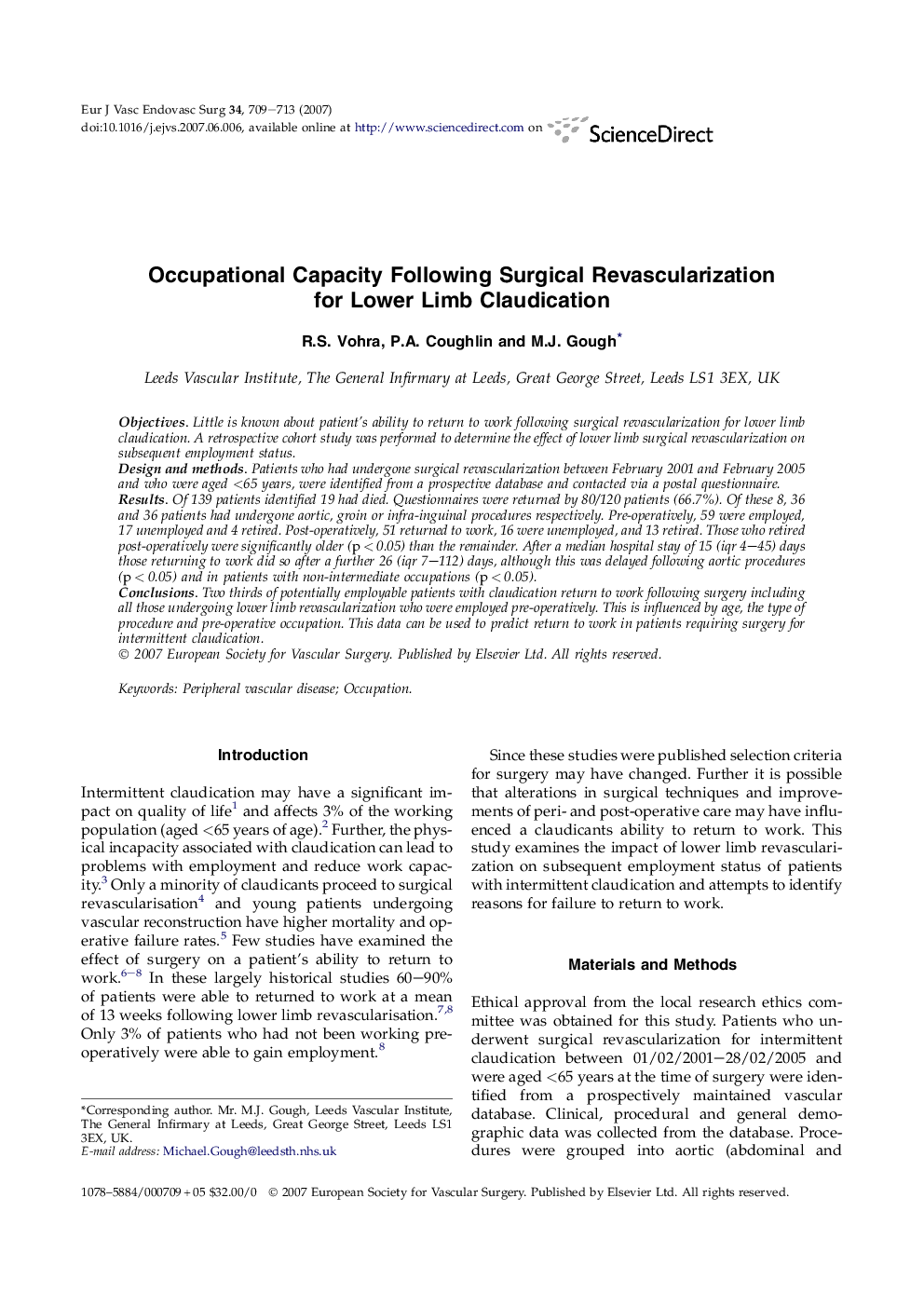| Article ID | Journal | Published Year | Pages | File Type |
|---|---|---|---|---|
| 2915339 | European Journal of Vascular and Endovascular Surgery | 2007 | 5 Pages |
ObjectivesLittle is known about patient’s ability to return to work following surgical revascularization for lower limb claudication. A retrospective cohort study was performed to determine the effect of lower limb surgical revascularization on subsequent employment status.Design and methodsPatients who had undergone surgical revascularization between February 2001 and February 2005 and who were aged <65 years, were identified from a prospective database and contacted via a postal questionnaire.ResultsOf 139 patients identified 19 had died. Questionnaires were returned by 80/120 patients (66.7%). Of these 8, 36 and 36 patients had undergone aortic, groin or infra-inguinal procedures respectively. Pre-operatively, 59 were employed, 17 unemployed and 4 retired. Post-operatively, 51 returned to work, 16 were unemployed, and 13 retired. Those who retired post-operatively were significantly older (p < 0.05) than the remainder. After a median hospital stay of 15 (iqr 4–45) days those returning to work did so after a further 26 (iqr 7–112) days, although this was delayed following aortic procedures (p < 0.05) and in patients with non-intermediate occupations (p < 0.05).ConclusionsTwo thirds of potentially employable patients with claudication return to work following surgery including all those undergoing lower limb revascularization who were employed pre-operatively. This is influenced by age, the type of procedure and pre-operative occupation. This data can be used to predict return to work in patients requiring surgery for intermittent claudication.
